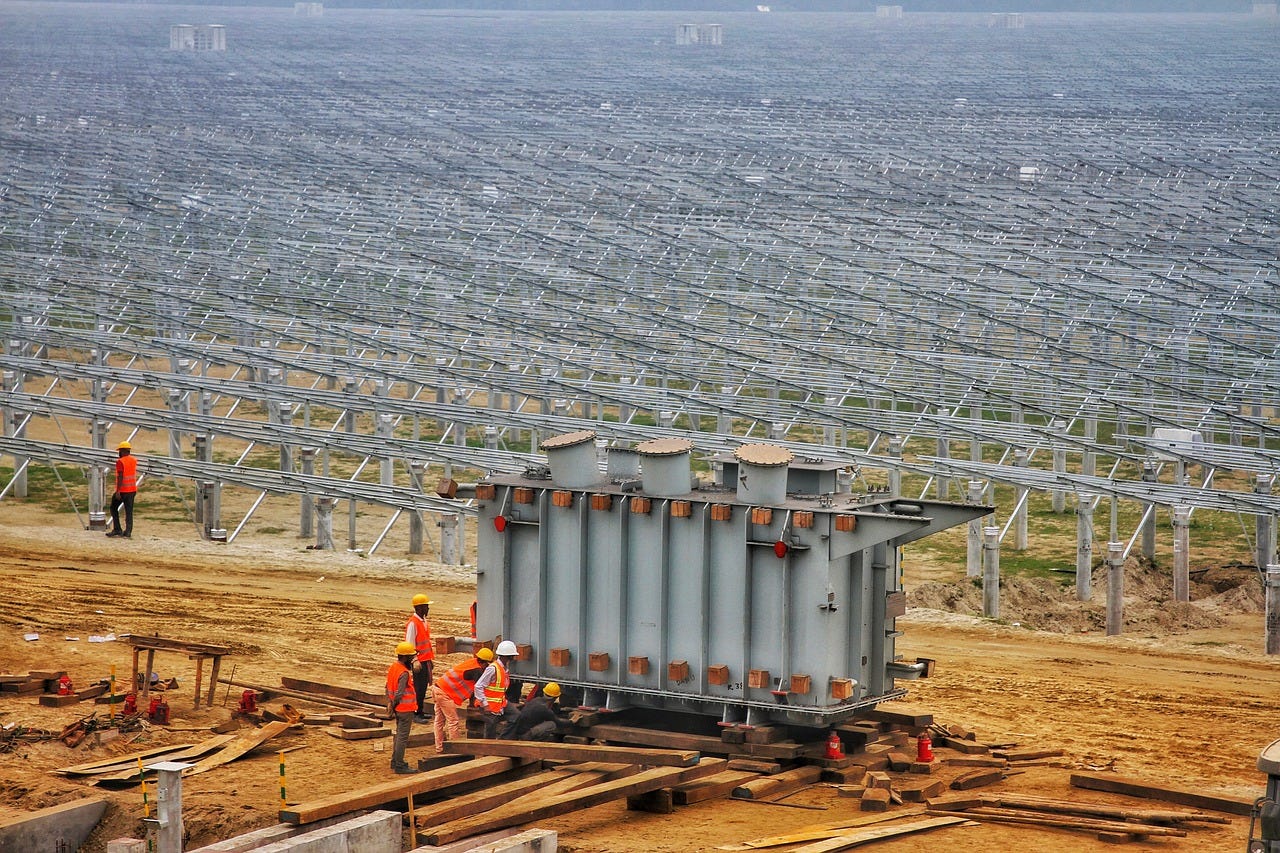I’m Ian Morse, and this is Green Rocks, a newsletter that doesn’t want dirty mining to ruin clean energy.
The black box: Solar energy.
The tangle: The black box is a “Green” black box, widely believed to steer humans out of climate crisis, but it relies on industries that have historically treated workers poorly and left pollution in its wake.
I speak with an environmental studies professor in this edition, and it’s an edition that must be approached delicately. Readers might be prompted to ask With so many issues, is solar worth it? What about two different questions: Who decides whether it is worth it? What can be changed to get rid of the question altogether?
There are so many fantastic things about solar panels. They take the most widespread energy source on earth and convert it into an energy without burning. In a metaphorical kind of way, it’s like aligning humans’ energy consumption with the energy that has always powered the earth — the energy that every other living thing relies on. And because it’s so widespread, it has the potential to reshape energy. Individual households can generate their own electricity (with the help of a few batteries).
And even better, the cost of electricity from photovoltaic cells has been falling faster than most predicted a decade ago. Solar PV in the US is a much safer investment than coal, and a lot of that is because solar is cheaper. If you were to strip out the subsidies built into coal and add the environmental costs which aren’t reflected in the current price, coal doesn’t stand a chance.
“With all of that, the reality of the technology is that it’s a semiconductor, and semiconductors and electronics and chemical industries in many ways historically have been the villains in environmental thinking,” says Dustin Mulvaney.
There are issues, and Mulvaney doesn’t think people should ignore them. I chatted with him earlier this week about his research, much of which can be found in his book, Solar Power. He’s a professor at San Jose State University and tweets videos of the California coast.
Fundamental to Mulvaney’s thinking is that the details of solar power are important. Solar panels are a black box, because it seems the only thing that matters is that consumers get their clean electricity. For Mulvaney, the insides matter.
Like this newsletter, Mulvaney’s work is a delicate tightrope walk. He calls it a “tangle.” Energy changes need to happen in order to avoid the worst possible futures of a climate crisis, which will be felt by the most vulnerable who had nothing to do with creating the crisis. Solar panels is one of the technologies — perhaps the most promising — that is widely seen as the solution to rising temperatures. If we all just replace our fossil fuels with glossy blue panels, temperatures will stay under a 2-degree rise. Solar panels, though, are the product of a global market.
“That’s the interest to me. Okay, we have this great sustainable, less polluting energy source — and I think that can all be verified and true — at the same time it’s reliant on industry that historically has caused all sorts of pollution problems and not treated workers well.”
The emergence of solar panels has also been accompanied a fair amount of romantic, starry-eyed stories of salvation. Naturally, there’s a tendency to believe the impacts are solely at the consumer end. That is, after all, why technology is created. But technology doesn’t operate in a vacuum, and Mulvaney was among the researchers who got over this utopianism more than a decade ago.
Solar energy is more than the glass panels. It is the aluminum frame the hold panels toward the sun. (Green Rocks has a 2-part aluminum series.) It’s the semiconductors of various metals manufactured from mines and smelters. Those metals can be some you’ve heard of, like copper, zinc and tin. Then there are the ones people are still learning to pronounce: Molybdenum, cadmium, tellurium, gallium, selenium and indium.
Solar panels are also the people who have created them. None of these materials mean anything without labor. Recently, reports have begun alleging that major solar technology companies may be using forced labor in Uighur camps in Xinjiang, China. Long before that, the chemical and electronics industries that now support photovoltaics had put workers and surrounding communities at risk of hazardous chemicals. Mulvaney heard recently of indium lung, a condition experienced by workers who create thin films like the ones used in solar panels and LCD screens.
They also don’t mean anything unless they have space to operate. Finding land without displacing or dramatically altering the landscape is one of the solar’s biggest hurdles, and one that Mulvaney fears will be abused. It already has been, particularly in areas with less representation in the rich world’s press.
This is what’s inside the black box. But when the black box is a “Green” black box, Mulvaney is finding some people don’t want to see what’s inside. “Like, who is going to come out and talk about this Uighur issue? I haven’t seen one environmental group come out and say anything. None.”
“You can have green jobs in one place and have dirty jobs in the same commodity system. It’s not a contradiction to say that. It’s a contradiction to not be for environmental justice across the whole thing.”
By nature, a black box appears fixed and predetermined, like an object whose structure is simply a fact of the world. That makes it easy to take for granted social processes that create solar panels, Mulvaney writes.
But it also reveals that a solar panel is not a solar panel until it’s installed on your house or at a solar farm. Before that, the materials could be destined for electronics or construction or any number of different products.
Mulvaney is trying to deconstruct the black box while climate advocates are trying to spread the black box as quickly as possible. Now, with a new president that uses phrases like “climate emergency”, US advocates may find it easier to untangle the need to find climate solutions and the impacts they each have.
!
Kamala Harris is not only the first woman, South Asian and Black Vice President of the US, but also the first to introduce a comprehensive climate plan.
Thanks for reading! I’m Ian Morse, and this is Green Rocks, a newsletter that doesn’t want dirty mining to ruin clean energy.
These topics are relevant to anyone who consumes energy. If you know someone like that, tell them to sign up!












The environmental impacts of wind, solar, batteries, and other technologies are important and not getting the attention they deserve. Both the full life cycle of manufacturing and also the land use impacts need to be properly accounted for. The productivity of wind and solar tend to be wildly exaggerated while their impacts on the landscape minimized. There is growing resistance in rural areas to industrial renewable energy, and for good reason. I would not want to live less than a mile from a large wind turbine, they have a dramatic impact on people's quality of life, especially if you are directly in its wake or shadows, it will make your home unlivable. And while rooftop solar is great, productivity is relatively trivial. Cutting down forests and razing 1 sq km of intact ecosystems to build 100MW of solar is going in the wrong direction environmentally if you ask me. We need ecosystems intact so they can pull down carbon from the atmosphere and convert it into soil and life, more than we need new sources of electronics waste.